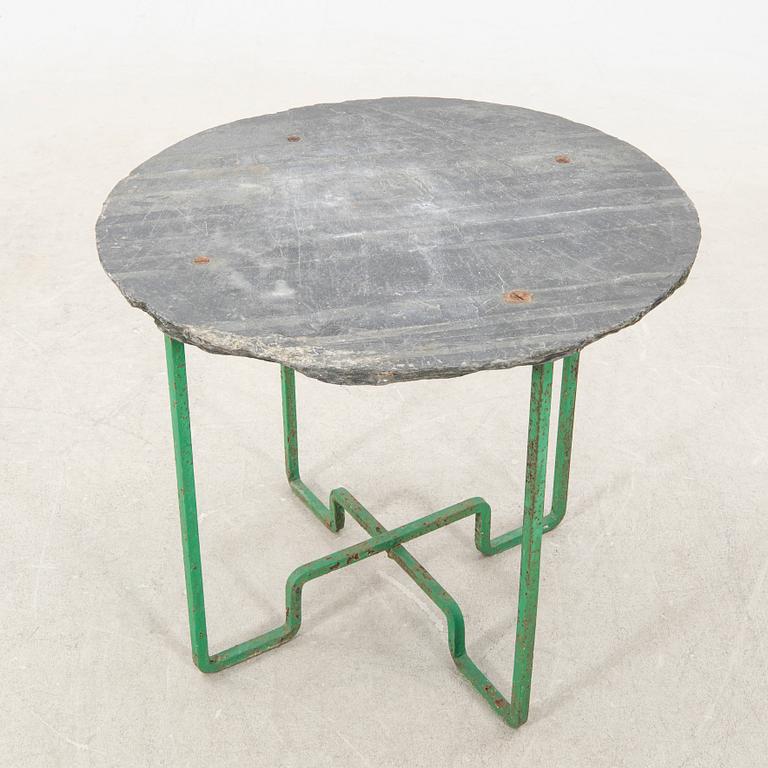Carl Hörvik
Carl Hörvik, a 1930s slate garden table nr 7 Produced by Grythyttan Stålmöbler & Skifferverket
Round top of rough-hewn slate, base of painted metal, diameter 70 cm, height 60 cm.
Wear due to age and use. Scratches. Fritting. Colour losses. Rust. Later painting.
Literature
Katalog, Grythyttan Stålmöbler, 1931, n.p.
Dan Gordan, 'Svenska Stolar och deras formgivare 1899-2013', 2014, p. 70.
Related examples are retained within the collection of the Nationalmuseum, Stockholm,
Designer
Carl Hörvik was an architect and inventative furniture designer. Hörvik was a classmate of Gunnar Asplund at the Royal Institute of Technology. He was considered one of the greatest architectural talents of his generation and a person from whom Asplund is said to have been greatly influenced. Hörvik opened his own office in 1914. He worked on the interior of the Röhsska Museum in 1916, and participated in the Workshop's exhibition at Liljevalchs in 1920 with an unusually progressive furniture set in polished birch. At the Gothenburg Exhibition in 1923, he was exhibiting a spacious hall interior in grey with large armchairs and delicate stools. The furniture from Nordiska Kompaniet, with which he participated in the Paris World Fair in 1925, had a monumental character of luxury and earned him the Grand Prix. Hörvik designed furniture for Hantverkslotterierna (the Craft Lotteries) in Stockholm, Gothenburg, and Malmö for several years. He also designed the Swedish Student House in Paris in 1931 and the county residence in Umeå in 1932.
Read more

















































